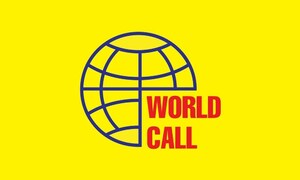WASHINGTON: A united U.S. Federal Reserve agreed to hold interest rates steady at the June meeting as a way to buy time and assess whether further rate hikes would be needed, even as the vast bulk expected they would eventually need to tighten policy further, according to meeting minutes released on Wednesday.
While "some participants" wanted to move ahead with a rate hike in June because progress in cooling inflation had been slow, "almost all participants judged it appropriate or acceptable to maintain" the federal funds rate at the existing 5% to 5.25%, the minutes said.
"Most of those participants observed that leaving the target range unchanged at this meeting would allow them more time to assess the economy's progress," toward returning inflation to 2% from its current level more than twice that.
The minutes added detail to the policy statement and economic projections issued after the June 13-14 session, when the Fed ended its 10-meeting streak of rate hikes with a decision to hold the benchmark federal funds rate steady.
US Federal Reserve chair says additional rate hikes likely
Markets were little changed after the minutes, with traders in futures tied to the Fed policy rate continuing to price in a rate hike in July and about a one-in-three chance of another increase before the end of the year.
While Fed staff still saw a "mild recession" beginning later this year, they now viewed avoiding a downturn as only a little less likely than their baseline. Meanwhile policymakers wrestled with data showing a continued tight job market and only modest improvements in inflation.
Officials also tried to reconcile headline numbers showing continued economic strength with evidence of possible weakness - of household employment figures that pointed to a weaker labor market than the payroll numbers indicated, or national income data that seemed weaker than the more prominent readings of gross domestic product.
The logic of waiting, whether it amounted to a "skip" of one meeting or turned into a longer pause, reflected what officials said was still deep uncertainty around whether the Fed had already raised rates enough to tame inflation -- and only needed to wait for the impact of tighter policy to be realized -- or still needed to lean on the economy harder.
"Most participants observed that uncertainty about the outlook for the economy and inflation remained elevated and that additional information would be valuable for considering the appropriate stance of monetary policy," the minutes said.
The projections issued after the June meeting showed 16 of 18 officials still expected the policy interest rate would need to rise at least another quarter of a percentage point by the end of the year.
In that context, Fed Chair Jerome Powell at a press conference after the June meeting said the decision marked a switch in strategy, with the central bank focused more on just how much additional policy tightening might be needed and less on maintaining a steady pace of increases.
"Stretching out into a more moderate pace is appropriate to allow you to make that judgment" over time, Powell said.
Investors in contracts tied to the overnight federal funds rate feel the Fed is highly likely to raise the benchmark rate by a quarter point, to a range between 5.25% and 5.5%, at its July 25-26 meeting.


























Comments
Comments are closed.